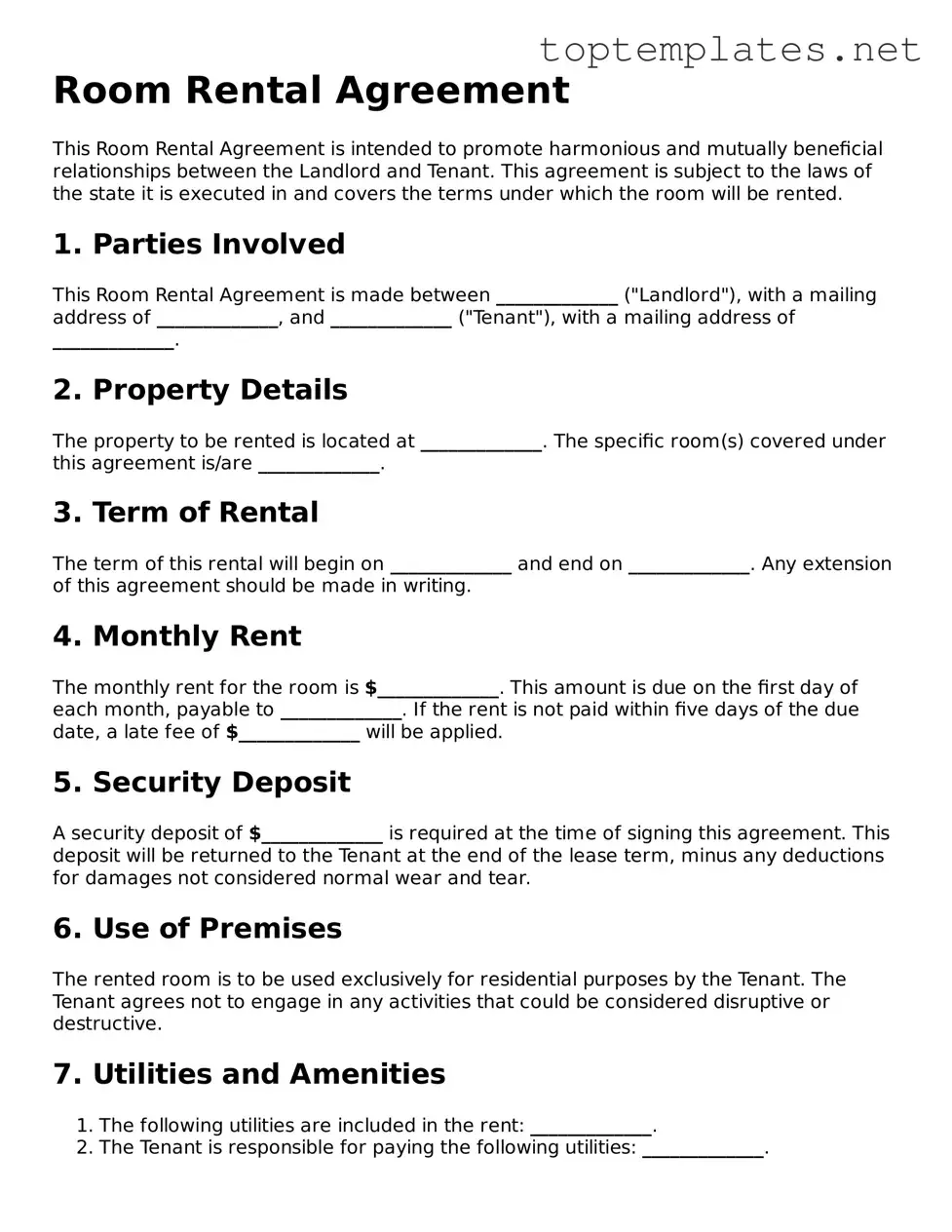Room Rental Agreement
This Room Rental Agreement is intended to promote harmonious and mutually beneficial relationships between the Landlord and Tenant. This agreement is subject to the laws of the state it is executed in and covers the terms under which the room will be rented.
1. Parties Involved
This Room Rental Agreement is made between _____________ ("Landlord"), with a mailing address of _____________, and _____________ ("Tenant"), with a mailing address of _____________.
2. Property Details
The property to be rented is located at _____________. The specific room(s) covered under this agreement is/are _____________.
3. Term of Rental
The term of this rental will begin on _____________ and end on _____________. Any extension of this agreement should be made in writing.
4. Monthly Rent
The monthly rent for the room is $_____________. This amount is due on the first day of each month, payable to _____________. If the rent is not paid within five days of the due date, a late fee of $_____________ will be applied.
5. Security Deposit
A security deposit of $_____________ is required at the time of signing this agreement. This deposit will be returned to the Tenant at the end of the lease term, minus any deductions for damages not considered normal wear and tear.
6. Use of Premises
The rented room is to be used exclusively for residential purposes by the Tenant. The Tenant agrees not to engage in any activities that could be considered disruptive or destructive.
7. Utilities and Amenities
- The following utilities are included in the rent: _____________.
- The Tenant is responsible for paying the following utilities: _____________.
- Shared amenities include: _____________, and are to be used respectfully and maintained in good condition.
8. Maintenance and Repairs
The Tenant is responsible for keeping their room clean and in good condition. Any damages beyond normal wear and tear will be the responsibility of the Tenant to repair or pay for.
9. Rules and Policies
The Tenant agrees to follow all rules and policies set forth by the Landlord regarding noise, guest visitations, and use of common areas. These rules are designed to ensure a peaceful living environment for all residents.
10. Termination
This Room Rental Agreement may be terminated by either party with a written notice _____________ days in advance. If the Tenant violates any terms of this agreement, the Landlord has the right to terminate the agreement with immediate effect.
11. Governing Law
This Room Rental Agreement will be governed by and construed in accordance with the laws of the State of _____________.
12. Signatures
By signing below, both the Landlord and Tenant agree to all terms and conditions outlined in this Room Rental Agreement.
Landlord Signature: __________________________________ Date: ____________
Tenant Signature: __________________________________ Date: ____________
